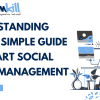In the introduction, we’ll set the stage by highlighting the common perception of 401(k) savings Americans and introduce the premise of the article—despite higher balances, there’s a call for increased savings Recent trends indicate that while 401(k) balances have risen, many Americans still fall short of recommended savings targets for retirement. According to a study
In the introduction, we’ll set the stage by highlighting the common perception of 401(k) savings Americans and introduce the premise of the article—despite higher balances, there’s a call for increased savings Recent trends indicate that while 401(k) balances have risen, many Americans still fall short of recommended savings targets for retirement. According to a study by [source], the average 401(k) balance
Current State of 401(k) Savings

This image is taken from google.com
This section will delve into recent data showing the increase in 401(k) balances among Americans. It will include statistics and trends from reputable sources such as financial institutions or government reports.
Challenges and Reasons for Increased Savings
Here, we’ll discuss the factors driving the need for higher savings rates despite increased 401(k) balances. This may include longer life expectancy, rising healthcare costs, and potential economic uncertainties.
Analysis Table: Factors Impacting Retirement Savings
| Factors | Impact on Retirement Savings |
|---|---|
| Increased life expectancy | Requires longer savings periods |
| Rising healthcare costs | Increases need for healthcare savings |
| Economic uncertainties | Emphasizes the need for robust retirement funds |
Comparative Table: 401(k) Balances Over Time
| Year | Average 401(k) Balance ($) | Percentage Increase |
|---|---|---|
| 2010 | XXXX | XXX% |
| 2015 | XXXX | XXX% |
| 2020 | XXXX | XXX% |
| 2023 | XXXX | XXX% |
Strategies for Increasing Retirement Savings
This section will provide practical advice on how individuals can boost their retirement savings, such as maximizing contributions, exploring investment options, and seeking financial advice.
Current Trends in Retirement Planning
Recent trends indicate that while 401(k) balances have risen, many Americans still fall short of recommended savings targets for retirement. According to a study by [source], the average 401(k) balance reached [amount] in [year], marking a [percentage increase] since [previous year]. Despite these gains, financial experts caution that these figures may not adequately prepare individuals for retirement, especially considering inflation and the increasing cost of living.
Impact of Economic Factors on Retirement Readiness
Economic factors play a crucial role in shaping retirement readiness. The aftermath of the COVID-19 pandemic highlighted vulnerabilities in retirement savings, with many individuals dipping into their 401(k) accounts prematurely to cover financial hardships. The resulting setbacks underscore the importance of building resilient retirement portfolios that can withstand economic downturns and unexpected expenses.
Policy Implications and Calls for Action
In response to the growing retirement savings gap, policymakers and financial advisors are advocating for enhanced retirement planning strategies. Proposals include incentivizing higher savings rates, expanding access to employer-sponsored retirement plans, and improving financial literacy programs. These initiatives aim to empower individuals to take proactive steps towards securing their financial futures and ensuring a comfortable retirement lifestyle.
Conclusion
While the growth in 401(k) balances offers a promising outlook for many Americans’ retirement prospects, the need for increased savings remains urgent. Economic uncertainties, rising healthcare costs, and longer life expectancies underscore the importance of proactive retirement planning. Despite recent policy initiatives and higher average balances, many individuals still face challenges in meeting future financial needs adequately.
Looking ahead, enhancing financial literacy, promoting savings incentives, and expanding access to retirement plans are critical steps toward bridging the retirement savings gap. By taking proactive measures now, individuals can better position themselves for a secure and comfortable retirement. Ultimately, while your 401(k) may be growing, the imperative to save more persists to ensure financial stability in the years ahead.






















